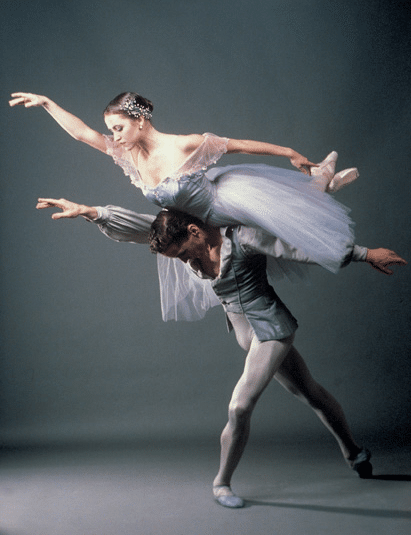
Throughout this year and the next two seasons, The Gerald Arpino Foundation is celebrating the legendary choreographer’s 100th birthday through special licensing agreements with ballet companies and university dance programs around the country. We’ll be sharing occasional “spotlights” on some of these performances as we build excitement toward the culminating Chicago Centennial Celebration in September 2023 at the Auditorium Theatre.
Universal Ballet Competition (UBC) is a premier student ballet competition that has expanded into eight major metropolitan cities in the U.S. due to its growing popularity among dancers, studio directors, and the ballet community. Founding members Lissette Salgado and David Lucas, former principal dancers of the Joffrey Ballet and the Royal Winnipeg Ballet, have recruited globally renowned dancers, company directors, and ballet school directors to judge, mentor, and teach the master classes during each UBC competition. Since its first season, UBC has hosted and mentored more than 10,000 dancers and awarded more than $3 million in scholarships.
On May 30, UBC is hosting a Gala event in Jacksonville, Florida that features Arpino’s L’Air D’Espirit, performed by Misa Kuranaga and Joseph Walsh of San Francisco Ballet, staged by Tina LeBlanc. L’Air D’Espirit, premiered in Chicago at the Auditorium Theatre on Feb 9, 1973, danced by Francesca Corkle and Glenn White. The ballet evokes the feminine aura of the great ballerina Olga Spessivtseva, best known for her ethereal performances of Giselle in the Diaghilev era. We interviewed Tina as she shared her thoughts about Mr. Arpino and more.
What is your personal history performing Arpino works?
I joined Joffrey II when I was 15 and was fortunate to have some of my own roles even before I joined the main company—I did every young girl role. Some of the Arpino works I performed were Confetti, Kettentanz, Birthday Variations, Suite Saint-Saëns, Light Rain, Viva Vivaldi, L’Air D’Espirit, Clowns, Reflections, and a few that are perhaps less prominent, like The Pantages and the Palace Present “Two-A-Day”, a throwback to vaudeville, and Jamboree, a tribute to San Antonio.
For Kettentanz I remember getting ready in the wings to enter; we were a line of about 12 people, six couples, with our hands on each other’s shoulders, and we’d come in like a snake. As we listened to the intro, we’d say, “OK chain gang! Let’s have a good show!” It was technically difficult, but really beautiful.
L’Air is very close to my heart, one of my favorites while I was dancing. Glenn Edgerton was my first partner, and I also danced it with Tom Mossbrucker.
Reflections was the first slow pas de deux I did with Joffrey—and it was with Ashley Wheater, now the director of the Joffrey.
What does it mean to you to stage the work on San Francisco Ballet dancers as we celebrate Mr. Arpino’s centennial?
It’s been nice to revisit it, hone it a bit more. The older you get the more you learn, and I wish I could go back and do it the way I think now. It’s been really nice to go through it with new dancers who are completely unfamiliar with Arpino’s works and shape it the way I think it should be. Misa and Joseph are in a very good place; they’re beautiful dancers.
How would you describe the Arpino style? What are some distinctive elements of his choreography?
Two words that stand out in my mind are energy and dynamics. His pieces always have them—or as he would put it, “Za, baby! You gotta have za!”—which meant dynamics in my mind. As far as Mr. Arpino himself—in that movie The Company, Malcolm McDowell’s character was spot on.
How does dancing Arpino ballets prepare a dancer for other types of repertory?
Because they are technically demanding and need a lot of stamina—at least the pieces I did—if you can master this form, you can pretty much do anything. It teaches you how to pace yourself, the musicality, the dynamics. It’s a well-rounded way to approach any piece if you use pacing, musicality, and dynamics.
